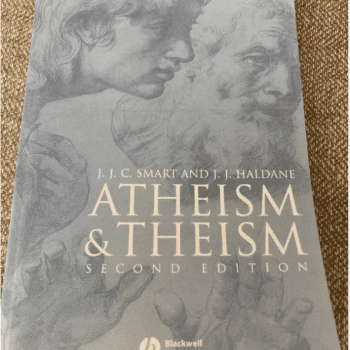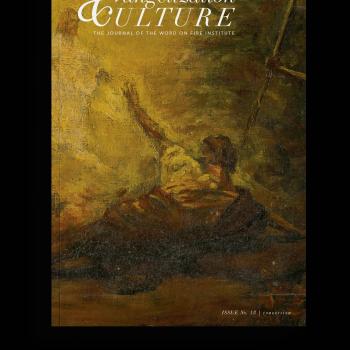This just appeared in the Winter 2010 issue of Philosophia Christi (429-439). It is a review essay of Edward Feser’s latest book, Aquinas: A Beginner’s Guide. Although you cannot presently get the article online, you can see the issue’s table of contents here. (Update: It is now accessible online here. Special thanks to the PC editor for granting me permission to post it on my website. For a profile of the entire issue of PC, go here). In the same issue is a review essay of my book, Defending Life: A Moral and Legal Case Against Abortion Choice (Cambridge University Press, 2007). It is written by Calvin College philosophy professor Kevin Corcoran, who I had the pleasure to meet three years ago at the 2007 meeting of the Evangelical Philosophical Society. He was a discussant in a session on Defending Life. I have not yet read the review essay. But since he’s a very bright philosopher, I should get a run for my money.
A portion of my review essay deals with Feser’s take on St. Thomas and Intelligent Design (ID). As readers of Return to Rome know, I am critical of ID, having published several articles in the past couple of years in which I make this plain. (See here, here, and here, but especially read my four part series on the BioLogos blog in which I tell about my initial and developing misgivings about ID. Here is part 1, part 2, part 3, and part 4). In any event, here is an excerpt of the Philosophia Christi review essay that may interest readers of Return to Rome (notes omitted):
Even though some attribute an ID-approach to Aquinas, Feser argues that the attribution is mistaken and reveals a misunderstanding of what Aquinas was trying accomplish in his Fifth Way. For Aquinas, the design or purpose of nature refers to the interrelationship of “all things” in the universe, including scientific laws and all inanimate and animate things and their powers, which have their own natures that direct them to certain ends. And they are all kept in existence by the God Who brought the universe into being ex nihilo. Thus, writes Feser, “Aquinas . . . takes the Fifth Way to entail the existence of nothing less than the God of classical theism, who sustains the order of the world here and now and at any moment at which it exists” (111) That is, “Aquinas’s argument is intended as a metaphysical demonstration” and not as a “quasi-scientific empirical hypothesis” that claims to offer a probable and provisionary answer, which is precisely what the ID advocates claim of their view (111). As Dembski writes, ID “depends on advances in probability theory, computer science, molecular biology, the philosophy of science and the concept of information—to name but a few.” Thus, without the assistance of these advances, belief in design in nature is imperiled. For this reason, according to Stephen Meyer, ID must exclusively bear the burden to ward off philosophical materialism. Or, as Dembski puts it: “Naturalism is the disease. Intelligent design is the cure.”
As Feser suggests, this posture does to Christian metaphysics what some prominent analytic philosophers are suggesting every branch of philosophy should have done to it: naturalize it. As Brian Leiter puts it, the first half of the twentieth century’s “linguistic turn . . . . has either been supplanted or supplemented by the naturalistic turn, in which traditional philosophical problems are thought be insoluble by the a priori, armchair methods of the philosopher, and to require, instead, embedding in (or replacement by) suitable empirical theories.” And this naturalistic turn requires a particular approach to metaphysics that is informed by an empiricist epistemology found in modern science. As Leiter writes: “Philosophical understanding, in short, must be the same as scientific understanding: it must employ the same methods of understanding that the sciences deploy with good effect elsewhere.” Although ID advocates reject methodological naturalism (MN) in science when it comes to excluding ID conclusions a priori, they in fact emulate the methodological posture of their opponents when it comes to embracing the “naturalistic turn.” That is, when it comes to doing philosophy, Dembski and Leiter are two peas in a pod. The only difference is that Dembski thinks he has evidence for design whereas Leiter disagrees. But they are both operating under the aegis of the “naturalistic turn.” This is why ID advocates claim they are no less “scientific” than their critics, except that each comes to different conclusions. As Dembski puts it: ID “takes a long-standing philosophical intuition and cashes it out as a scientific research program.”
ID advocates are, of course, foes of naturalism, and Feser is not suggesting otherwise. What he is suggesting, however, is that they want to use the naturalist’s own methodological assumptions against naturalism, but in doing so concede so much to naturalism that they end up with a radically distorted theology and a dubious metaphysics.
This is why Feser argues that ID’s scientific research program, like Paley’s natural theology or philosophy’s naturalistic turn, takes for granted “a mechanistic view of nature” that “denies that purpose or teleology is immanent or inherent in nature” (115) Aquinas, according to Feser, rejects this view because it seemed to him that “every agent has a final cause; that is to say, that everything that serves as an efficient cause `points to’ or is `directed at’ some specific effect or range of effects as its natural end” (114) This is why, for the Thomist, chance and law—the two explanations that Dembski must eliminate in order to detect design in natural objects —are not defeaters to teleology in nature. For chance and law—the natural processes themselves—reveal the final causality immanent and inherent in nature….
Thus, for the Thomist, Darwinian mechanisms and pathways, as well as scientific laws and other natural processes, no more count against the existence and necessity of God (or even final or formal causality) than does the account of my conception by the natural processes of human reproduction count against the claim that God is Creator of the universe. This is because the Fifth Way, like each of the other Five Ways, is not an argument from some inexplicable facts in the universe to the existence of God, as if the Divine were a hypothesis provisionally embraced until further evidence turns up. Rather, according to Aquinas, the universe is a radically contingent being requiring a Necessary Being, God, for its genesis as well as its continued existence including the development and order (τέλοϛ) within it. But if one embraces the naturalistic turn, which assumes a methodological stance that excludes immanent final causality as empirically detectable because it eludes the strictures of modern science, then ID and naturalism seem like the only two philosophically attractive options. The Thomist, as Feser ably argues (36–51, 110–20), rejects this as a false choice.












